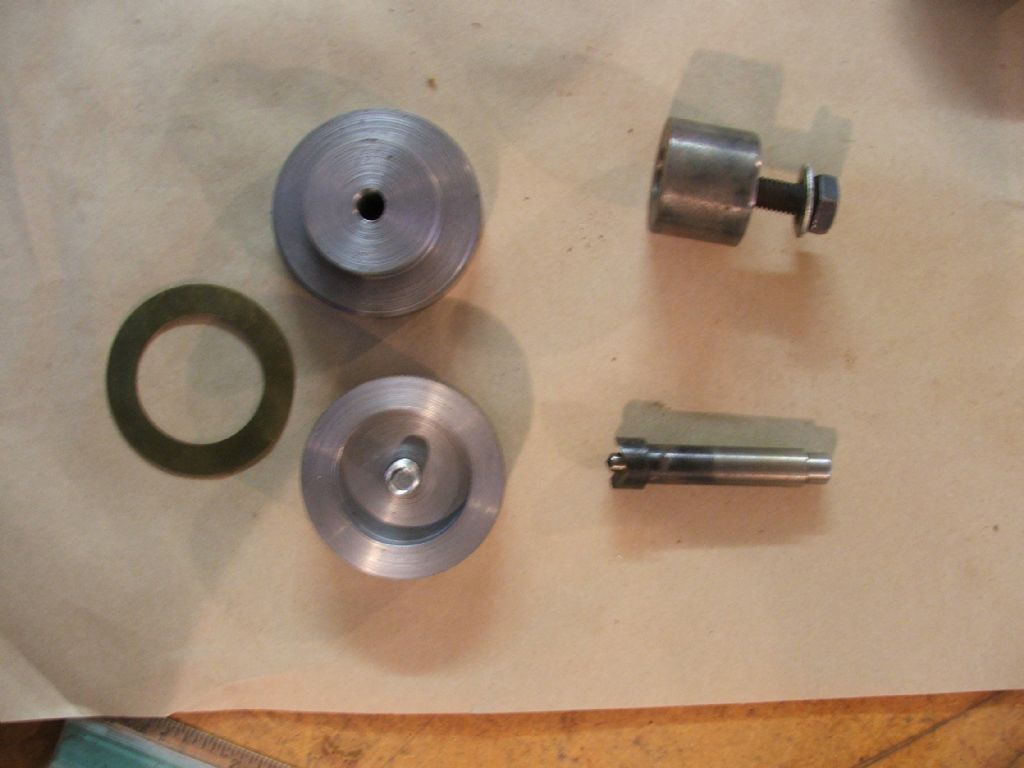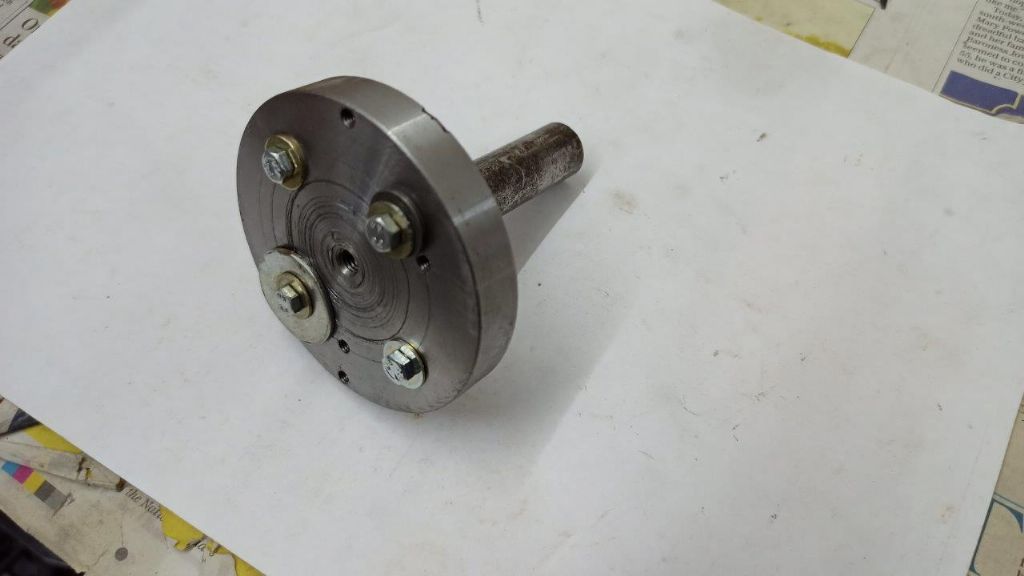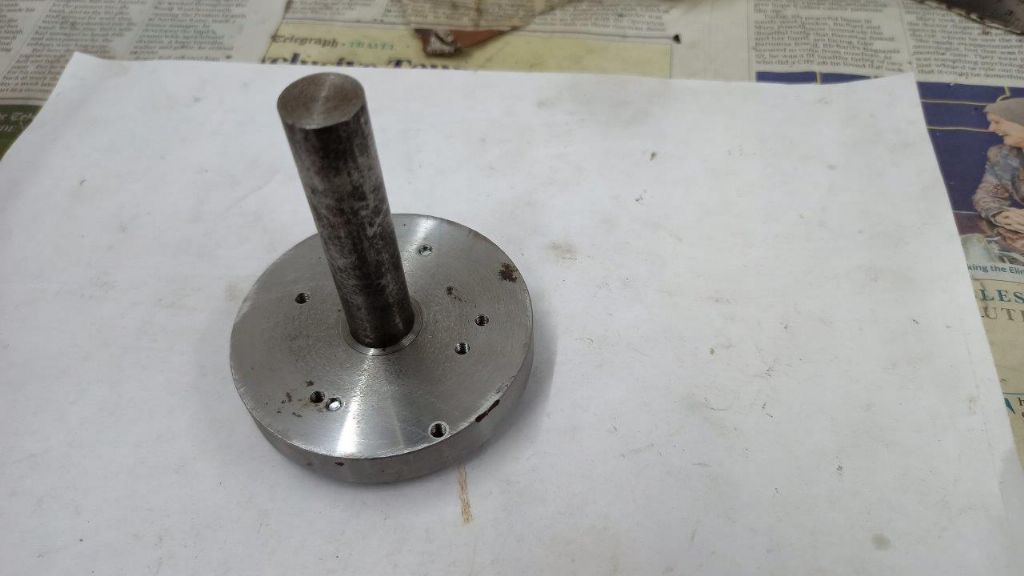There is a way I have used which does not require a lathe or column drill – an ordinary electric hand-drill, and an ordinary bench vice was all I had access to. But I did have a selection of hole 'drills' – the sort which has a central boss carrying a twist drill of 6mm (or 1/4 inch). Around the boss is a thread onto which can be screwed steel tubes in various sizes, with the end of the tube formed into saw teeth. One name for such things is 'Hole Saws' – and plumbers use them to bore the holes in the sides of your kitchen fittings.
You will need two of the saws themselves, one to fit inside the required shim, and one to go outside it. Now you need two oddments of plywood, one fairly thin (8mm +/-) and the other rather thicker, both a bit larger than the finished shim should be. Use the twist drill to bore a hole in the middle of the thin plywood, and clear off the splintery edges to leave smooth surfaces. Clamp a piece of shim material between the two plywood offcuts, and clamp one edge of this bundle in the vice, leaviung the whole surface area of the desired shim visible. If you have a small G-clamp or a similar tool, add it to the free edge to hold the two sheets of ply tight against the shimstock. Set the hand drill to a slow speed, and fit to it the smaller of the two hole saws. Guide the twist drill into the prepared hole, and drill slowly through the thin ply and the shim behind it. A squirt of oil will help. Lift out the disc of ply, and the inner off-cut of shim – carefully as the edges will not be nice and smooth. Now fit the larger hole saw, and repeat the operation, relying on the hole in the thick plywood to maintain concentricity.
This should produce a reasonable shim, which is likely to need trimming to neaten the edges, and it can be held in vice between the remains of the plywood to do this. If the shim material is thin (as they often need to be to take up clearance) you could trim the outer edge using tin-snips or a reject pair of scissors (when no-one is looking).
Don't be tempted to hold the assembly in your 'spare' hand as you do the drilling. If things start to go wrong you need to keep all your organs well away from spinning sharp edges … And if you are not sure, don't try and hope for the best. Gambling is never worthwhile.
Regards, Tim
Martin Dowing.











